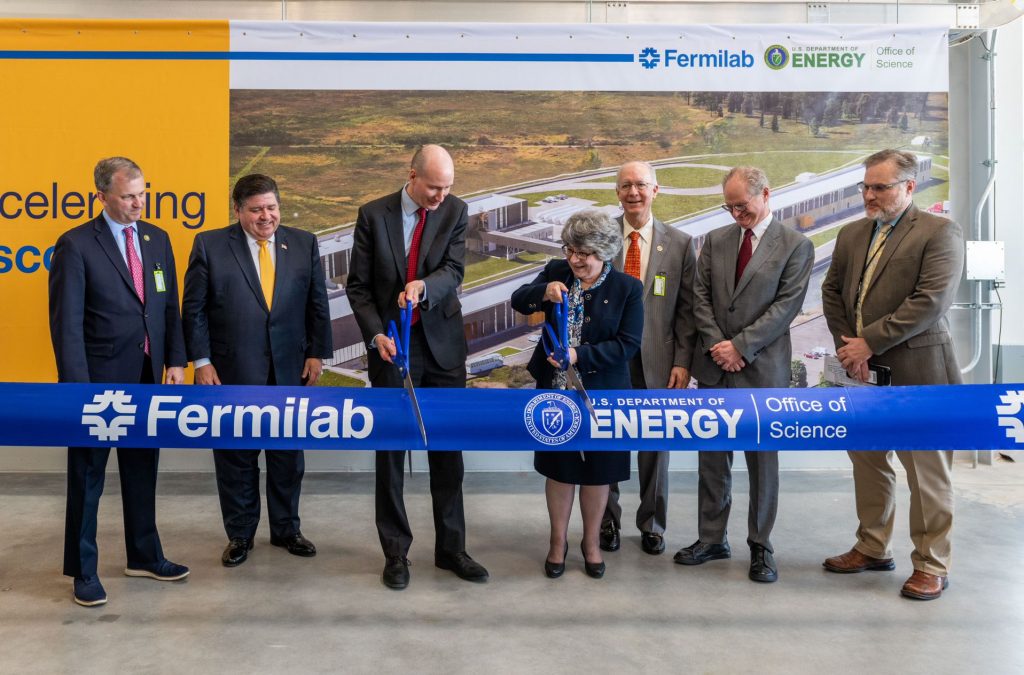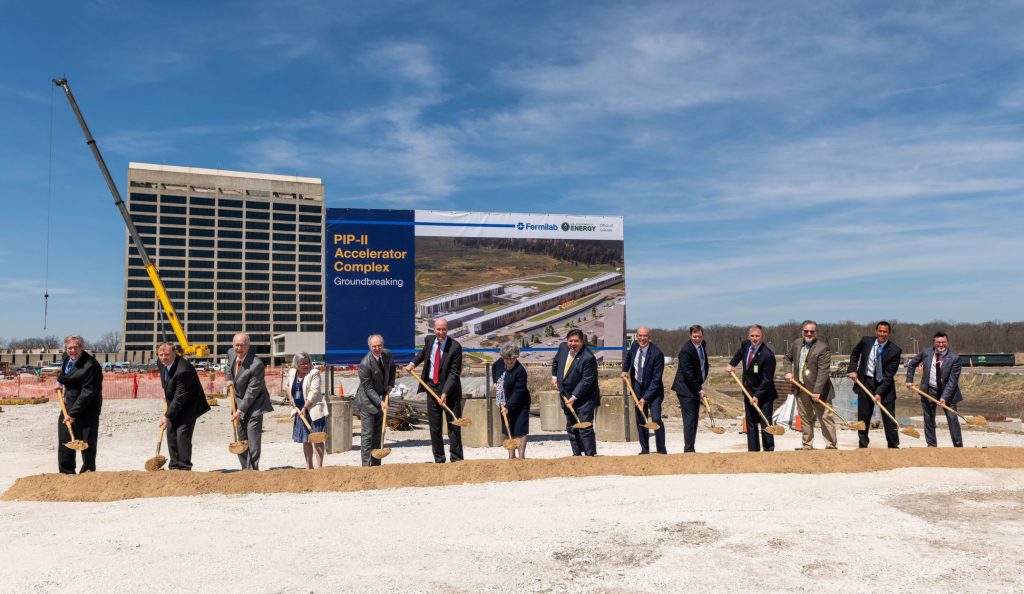Newswise — The U.S. Department of Energy’s Fermi National Accelerator Laboratory celebrated three important construction milestones yesterday that will increase the lab’s research efficiencies and capabilities. In attendance at the “Building Fermilab’s Future” ceremony in Batavia were representatives from the DOE Office of Science including Deputy Secretary of Energy David Turk along with Illinois state officials Gov. J.B. Pritzker, U.S. Reps. Sean Casten and Bill Foster, and national and international partners and collaborators.
“We don’t know that we’re witnessing history until, frankly, it is in the rear-view mirror. But with Fermilab, we get to celebrate discovery and innovation in real time, right now,” said Gov. J.B. Pritzker.
The brand-new, 80,000-square-foot Integrated Engineering Research Center (IERC), located next to the iconic Wilson Hall, will provide state-of-the-art lab space, making research and development a more collaborative and centralized process. It will be the new home of engineers and technicians working on high-energy physics projects, like the international Deep Underground Neutrino Experiment led by Fermilab and the proposed next-generation cosmic microwave background project called CMB-S4. It will also enable cutting-edge engineering for emerging technologies, including quantum and microelectronics.

Fermilab Director Lia Merminga and DOE Dep Sec. of Energy David Turk hold the key to the new 80,000-square-foot IERC building. Photo: Ryan Postel, Fermilab
Fermilab Director Lia Merminga welcomed all who attended, adding, “The completion of two buildings and the start of the PIP-II Linac Complex are major steps toward transforming our lab’s physical and scientific/engineering landscape. The new IERC and the PIP-II Cryoplant buildings will be centers of excellence for research, innovation and collaboration that will accelerate the science of DUNE and a rich array of discoveries.”

U.S. Reps. Sean Casten (far left) and Bill Foster (back, third right) joined the ribbon-cutting of Fermilab’s PIP-II cryoplant building with Gov. J.B. Pritzker (second left), Deputy Secretary of Energy David Turk (center left), Fermilab Director Lia Merminga (center right), University of Chicago President Paul Alivisatos (second from right) and Fermi Site Office Manager Roger Snyder (far right). Photo: Ryan Postel, Fermilab
The new PIP-II Cryogenic Plant Building was also opened at today’s event. It will house a cryogenic plant, which is an in-kind contribution from the Department of Atomic Energy, India, to provide the PIP-II accelerator with liquid helium to cool superconducting radio-frequency modules for particle acceleration. PIP-II is an essential enhancement to the Fermilab particle accelerator complex that will power beamline-based experiments at Fermilab. Its new 215-meter linear accelerator, or linac, will eventually power the high-energy neutrino beam that will send neutrinos through the earth toward the international DUNE project in Lead, South Dakota. PIP-II is the first U.S. accelerator project to be built with significant international contributions.
Fermilab had the ceremonial groundbreaking of the PIP-II Accelerator Complex with representatives from the DOE Office of Science, Illinois Gov. J.B. Pritzker and local officials, including U.S. Reps. Sean Casten and Bill Foster, and national and international partners and collaborators. Photo: Ryan Postel, Fermilab
The groundbreaking today for the Linac Complex for the PIP-II accelerator kicks off the construction of the approximately 800,000-square-foot complex that will have four components: the linac tunnel, where the linear accelerator will reside; the linac gallery that will house equipment, much of which will come from international partners as in-kind contributions; the high bay building, where the loading dock and room-temperature front end of the linac will be located; and a beam transfer line. The entire construction project is expected to take approximately 39 months.
Fermilab is located on 6,800 acres of prairie land in Batavia, Illinois, a Chicago suburb. The area selected for the PIP-II site minimizes the impact on the prairie, which Fermilab maintains. The site resides along Fermilab’s Main Ring Road, where contractors can work without interrupting other operations of the lab.
The construction of the Integrated Engineering Research Center was funded by the Science Laboratory Infrastructure program within the Department of Energy Office of Science.
Fermi National Accelerator Laboratory is supported by the Office of Science of the U.S. Department of Energy. The Office of Science is the single largest supporter of basic research in the physical sciences in the United States and is working to address some of the most pressing challenges of our time. For more information, please visit science.energy.gov or at www.fnal.gov and follow us on Twitter at @Fermilab.

